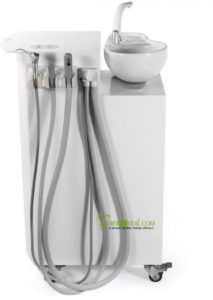Dental suction
Dental suction is a set of dental supplies and equipment that is used to suck saliva and blood from gum injuries. In fact, it is the same suction tube that is held in the patient’s mouth throughout the dental procedure. Dental suctions have different types and functions.

Types of pf dental suction:
There are usually two types of suctions used in dentistry:
- Water suction or salivary suction
- Air suction or high volume
Water suction:
The dental suction of the water type also called the salivary suction, is responsible for collecting saliva from the mouth, as well as the blood that collects in the mouth during tooth repair and extraction. This type of common dental suction is placed in the patient’s mouth in such a way that all the saliva in the mouth is emptied. About this type of dental suction, it can be said that they cause a lot of water to be wasted. In such a way that a volume of 8 to 13 liters of water is used for this purpose per minute. Due to the time-consuming nature of most dental activities, the volume of water consumed daily, and ultimately the total water consumption will be very high in each period. For this reason, it is recommended that water suctions be replaced with electric or pneumatic ones. This has become even more important in recent years when the water crisis has intensified.
Air suction:
Air suction is another common suction in dentistry. This type of dental suction is also known as high volume suction. The dental assistant keeps the dental suction near the area that needs to be repaired, and all materials, secretions, fluids, and tooth particles that are broken during the operation are collected. The performance of Air suctions is similar to that of a powerful vacuum cleaner. Because this suction is able to collect everything that is left in the mouth from materials and secretions easily and even without touching the teeth, through suction. The suction power is about 10 to 15 times that of water suction. In fact, the air flows at a speed of 150 to 200 kilometers per hour, which gives it a high suction power. Approximately, the suction power of this suction is 50 liters of water per minute and it is able to collect toothpicks, secretions, and blood in the mouth from a distance of 10 to 15 mm.
